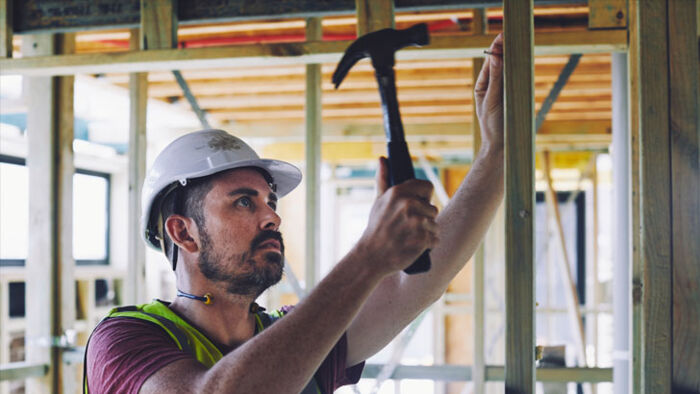Why builders are watching rate hikes closely
By Dale Gillham
Last week, the RBA increased interest rates again, putting further pressure on mortgage holders, but will this rate rise also impact the construction industry and new homes?
As many building companies have defaulted over the past few years due to labour shortages and the price of building materials at record levels, it's no wonder many Australians are worried about building a new home.
As such, you would think the latest rate rise would spell disaster for the building industry.
I'm not surprised that many think the housing market is all doom and gloom, but is this negative perception about the future of the construction industry an opportunity in waiting?
Is there a construction boom ahead?
As they say, it is always darkest before dawn, so let's look at some stats that make me think we might be about to boom rather than experience more doom.
Construction is important for Australia as it accounts for around 8 to 9% of the nation's GDP, contributing $4.04 billion to the economy as of the second quarter of this year.
This is an increase of 2.02% from the first quarter's value of $3.96 billion, and importantly, this trend has seen a steady rise since a low of $3.4 billion back in 2020.
Corelogic's Cordell Construction Cost Index (CCCI) tracks the cost of building a home, and as of the June quarter, it reported a growth rate of only 0.7%, the lowest since September 2020.
The CCCI also reported an increase of 8.4% on a yearly basis; however, last year, it was an increase of 11.9%, the largest annual index rise on record.
Migration remains high and will add to the labour supply in conjunction with the demand for new homes, so it will be interesting to see how this dynamic plays out.
We know the government is ready to spend $254.8 billion on infrastructure over the next four years and has promised to build 1.2 million new homes.
Given this, I suspect some big players in the industry are ready for the inevitable surge in construction, which is exciting for those looking to get into some good stocks.
Boral is Australia's largest listed construction materials company, with an international footprint from the US to Asia.
The company stated on November 11 that it had upgraded its earnings guidance for FY24 from $270-300 million to $300-330 million.
CSR is another big construction materials company also seeing record results, reporting half-year earnings of $165 million, up 18% yearly.
All of this is good news, as it indicates there are multiple signs that the building and construction industry is finding its legs and while there are some challenges ahead, I believe there is a boom just around the corner.
Given this, I recommend you get your boots on and hard hats out so you're ready when the opportunities arise.
What are the best and worst-performing sectors this week?
The best-performing sectors include Real Estate, up more than 4%, followed by Information Technology, up more than 3% and Materials, up more than 2%.
The worst-performing sectors include Communication Services, Financials and Energy, as they are all just in the red for the week so far.
The best-performing stocks in the ASX top 100 include ALS, up more than 12%, followed by Charter Hall Groups, up more than 11% and Block, up more than 8%.
The worst-performing stocks include AMP, down more than 14%, followed by Ramsay Healthcare and ANZ, down more than 5%.
What's next for the Australian stock market?
I said before that a week can be a long time in the stock market and this week has proven why given last week was looking very undecided and weak.
This week, however, the All Ordinaries Index is up more than 1% and has traded at its highest level in eight weeks. So, is this the end of the bearishness for 2023?
While I am still cautious about getting too excited with the current rise, given our market has been prone to false signals in the past few years, it is looking more likely that we will have a good end to the year.
Last week, I mentioned that we still can't confirm the down move is over, and for that to occur, we need to see the market rise over the coming weeks rather than fall.
While I mentioned this was unlikely, this is what is unfolding.
Once again, this proves that while we can use our best efforts to determine where the market or a stock is heading, we don't control the market, as it will do what it wants, hence my caution.
While I have moved to being more positive, I am still being cautious.
To remain positive, we need to see the All Ordinaries Index close strongly for the week. If Friday closes low, I will remain more bearish and urge investors to protect their portfolios.
Get stories like this in our newsletters.



